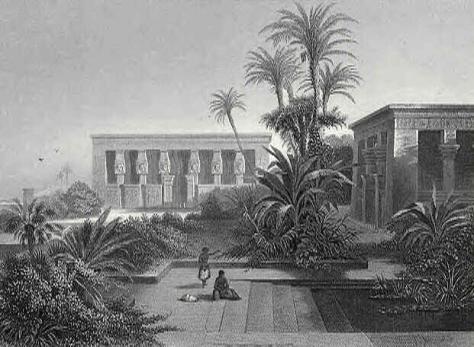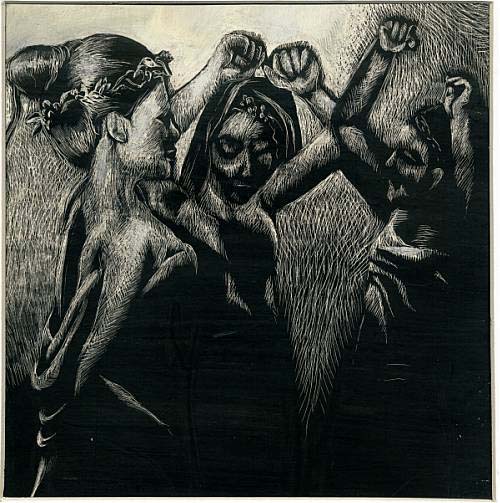
Date of Rulership: 22nd June-23rd JulyNegative, female; Quality: Cardinal; Ruling planet: Moon; Element: Water; Body part: Heart, Lungs, and stomach; Colour: Silvery Grey; Gemstone: Pearl; Metal: Silver.
In the signs thus far examined, we have seen the formative energies of life achieve expression through different mediums: initially through the spontaneity and impulsive carnal drives of Aries; then through the aesthetic kaleidoscope of meandering Taurus; and finally the subdivision of vital force under the command of Gemini which enabled an innovative, evolutionary leap of consciousness. The latter’s propensity to concurrently exist in material and ethereal worlds also made sentient an intermediary realm in which the physical and spiritual mingled. Many would understand this intermediary plane to be the unrestrained world of imagination, intuition, thinking, memory, and emotion. It binds spirit to the body, and the emancipating dialogue that ensues between the two as a result engenders far-reaching repercussions for both. It invariably shapes the bundle of psychological habits and impulses that each of us calls self. It is the god Proteus and the nymph Thetis; a primordial ocean of acute shape-shifting awareness. Sometimes one might find themselves trapped in a kaleidoscopic labyrinth of geometrical contours or in shapeless clouds. At other times, one might see a sequence of rhythms or sounds, hear colourful objects, and taste backward or previously unseen locomotion. At other times still, one can be overwhelmed or possessed by anxiety, fear, titillation, love, or relaxation one minute, and riddled by a complete absence of emotion the next. At some point it might be apparent that everything in existence comprises the skin of a gargantuan cosmic animal and at other points all created matter might appear to be discarnate and autonomous entities that simply inhabit the same cosmic space. Polarities can coalesce under a singular experience and thinking processes are transposed to concentrated levels that elude comprehension on the physical plane. Nothing is ever controlled or mediated; there is just a perpetual waxing and waning of thoughts and ideas that explode onto the sands of consciousness one minute and dry up the next. Time becomes a helium balloon, expanding as to spur the perception that a plethora of daylong activities have been squeezed into the space of a few minutes and then shrinking as to flush out the space of a day in two seconds. In this realm, the personal can become impersonal very quickly and barriers deemed impenetrable in the physical world are breached at will.
Gemini’s severe allergies to the emotional faucet rendered it somewhat superficial, insensitive, and impotent to the depth of experience, an anomaly which is corrected with the inauguration of the Cancerian archetype. Because the formative energies of Cancer originate from this intermediary realm of being which connects the physical and spiritual, it acquaints humans with their individual souls but also with the anima mundi, the cosmic soul of Mother Nature which unites all creatures irrespective of size or complexity. A newborn inclination to look inward for nirvana underpins the fundamental Gnostic adage of this archetype, namely that the external environment, the mechanical world into which we are born, appears to be an exotic synthesis of indifferent and insensitive elements that cannot offer inner harmony or fulfilment to spiritually-orientated humanity. The only hope for the human condition, according to Cancer, is to turn on the emotional faucets of the psychic plane and let the cold and hot water form a sensitive current that incite a sense of meaning and purpose and drive the impersonal spirit or life force through the tumultuous waters of life until it is again time to reunite with the paradisal state of perfection in maternal unconsciousness.
“Folks, life’s all about being feelings,” says Cancer. “Feelings and sandcastles, my friends! I like to build mine with all sorts of implements, usually down by the seashore. If I don’t use sand and water its paint and pastels, and sometimes I even use pen and writing paper. I create them with my vivid imagination and decide who or what is going to be living inside. I decide upon fates and lifespans and transcribe the romantic events that will unravel within its high walls. Sadly, there comes a time when the incoming tide levels and sucks them back into the pit of the ocean’s stomach. I understand the tides, the coming and going of primordial energies, and the cycles of the cosmos like no other which is why I build my houses strong. Strength equals domestic stability and tranquillity, something everyone wants! I use the sturdiest things available–sticks, stones, metals, bits of detritus from the seabed–to insulate my soft and squishy parts from Mother Nature’s wrath and Man’s acidic and unbecoming temperament. As a humanitarian, I’m always willing to share my space with an appropriate other, especially if that other is a poor, helpless soul in need of smothering or mothering.
I’ll be the first to admit that I’m tactile and love affection. I’ll also admit that I do have too much of the moon and the sea in me; my moods can go from black, to low, to white, to high, and to crescent shape in the space of about a microsecond. I can be volatile that way, but I more than make up for it with my talent for story-telling, my attention to detail, and my emotional rapport. I can also be timid and shy, but once you’ve gained my trust and extricated me from my crabby shell you’ll feel like you’ve known me for years! Once I’m out you’ll have to be rather gentle with me; I’m not particularly fond of prying eyes or confrontation, verbal or otherwise, so I will often sidestep around these. If this is not possible or plausible I’ll just thrust my big old pincers out and threaten to dice the adversary up into little pieces. You should also know that I’m a fiercely faithful friend, and my concern for the welfare of others can often be mistaken for clinginess and co-dependence. My soul is dark like rocks of obsidian, and deeper than the Mariana trench in the Pacific Ocean. Just like these qualities strike night terrors in those individuals not quite attuned to their inner selves, so too does it nurture my own worst nightmare–the fear that I might be deserted to my own devices and have to face life alone.”
Cancer is undoubtedly the first sign to actively work through the mimetic bank of the collective unconscious, drawing upon cosmic archetypes like the tribal brother or sister, love, the heroic journey, utopian societies like the legendary Atlantis, and the struggle between seemingly disembodied forces of good and evil to create its own narratives, real or imagined. Souls incarnating through the stars of this zodiacal constellation more often than not exhibit melancholia, sentimentalist romanticism, and a longing to recapture the locus classicus of Golden Ages bygone. The latter is most likely due to the fact that Cancerians retain prenatal memories of the paradisal perfection within the womb, and hence looking backward into the past is also examining a longwinded path that meanders further and further from union with the divine. Their deep connection to the supranormal and creative powers of the greater subconscious mind and its intuitive faction, as well as a heartfelt obsession with the subtler and intimate details of our psychological makeup makes them the true hub of the arts. It is no coincidence that souls born under the aegis of Cancer tend to be artists, writers, musicians, and poets. The unconscious willpower or drive of a Cancerian soul is second to none.
Lamentably, Cancer’s derivation from an imaginative plane experienced through the electrical power of primordial ebbs and flows without the aid of a transistor isn’t all milk and honey. Cancerians are notorious for letting the intellectual throne of their personal kingdoms be usurped by emotion, and we all know what happens when unchecked emotions are given prominence over wisdom and intellect: problems and worries multiply like virulent cancers and quickly distort our perceptions of the outside world so that everyone appears dishonest, deceptive, potentially threatening, and narcissistic. Emotionally disturbed Cancerians usually repress their feelings for prolonged periods, letting grievances and resentments simmer and become pressurised deep in the confines of their unconscious until these can no longer be contained. When the tempestuous eruption finally comes to pass, the rock-melting intensity of the sonic blast can be so potent as to incinerate, alter, or disfigure relationships permanently. This is one of just many reasons why Cancerians are introverts, choosing to traffic in relationships that are highly unlikely to balloon into melodramatic love affairs or force them into encounters with their own shadows.
Like Aries, Taurus and Gemini, there are also two symbols associated with Cancer the Crab. The first of these, the animal totem, evokes the primary psychic composition of all beings born under this zodiacal sign; deriving from and dwelling in the element of water, crabs are tranquil, expressive and passive in their habits. The existence of a shell denotes a self-absorbed proclivity towards domestication, introversion, emotional vulnerability, and cultivation of the soul’s imaginative realm. In embarking in a cross-cultural and historical examination, we find that the ubiquitous expression of this archetype has altered in time. For some of the prehistoric cultures, Cancer was represented as a crayfish. Moving into historic times, the ancient Egyptians imagined the constellation as an embodiment of the morning sun–Khephera –whose totemic animal was the scarab beetle. The modern image associated with this archetype was inherited from Babylonian or Chaldean astrology, the latter also influencing the iconography used by the Persian and Hellenistic peoples. The fixed stars associated with this constellation were deemed of utmost importance given that they delineated the seat of an ethereal Great Mother Goddess from which all life in the cosmos had sprung forth. Two ancient calendars, the Egyptian and the Mayan, further illuminate Cancer’s importance as an archetypal indicator of cosmic beginnings and endings: the ancient Egyptians, ascribed prominence to it as the home in which almighty Sirius, the mediating star of the wheel of heaven, rose heliacally to herald the New Year; and the Mayans prophesized that an alignment of the planets within Cancer would spur an act of un-creation and spell the end of the universe. In Roman myth, the goddess Juno fashioned Cancer and placed her in the starry heavens to serve as a cosmic chronometer and reverse the forward-moving cycle of creation when she finally felt that the process of becoming would be of no further benefit to mortals and immortals alike.
The second symbol, an astrological shorthand for the zodiacal sign, shows two identical figures whose arrangement discloses polar opposition. In Gemini this image of duality symbolizes a conunctionis or marriage of opposites, but in Cancer it draws attention to the insuperable psychic tides that are inherent in the nature of this archetype and demonstrated by the gravitational forces and see-saw interfaces imposed upon the earth by its mediating planet, the moon. The two spirals pertaining to each figure may be interpreted in a variety of ways; either as a pair of breasts, symbols of fecundity and divine providence, or as two spermatozoa whose conjunction generates the miracle of life. Both are connected to creation and both recall the feminine element of water as the great cosmic womb through which evolutionary life processes take root. Naturally this sign is intimately connected to physical conception and birth, as well as the psychological dependence of the developing ego on the uroboric Self. Hence, the symbol also serves as a memory cue for those primordial moments of happiness, fundamental unity, oneness, and paradisal perfection experienced in the womb before birth, along with the sadness and loss that comes from being separated from the maternal realm of unconsciousness,









